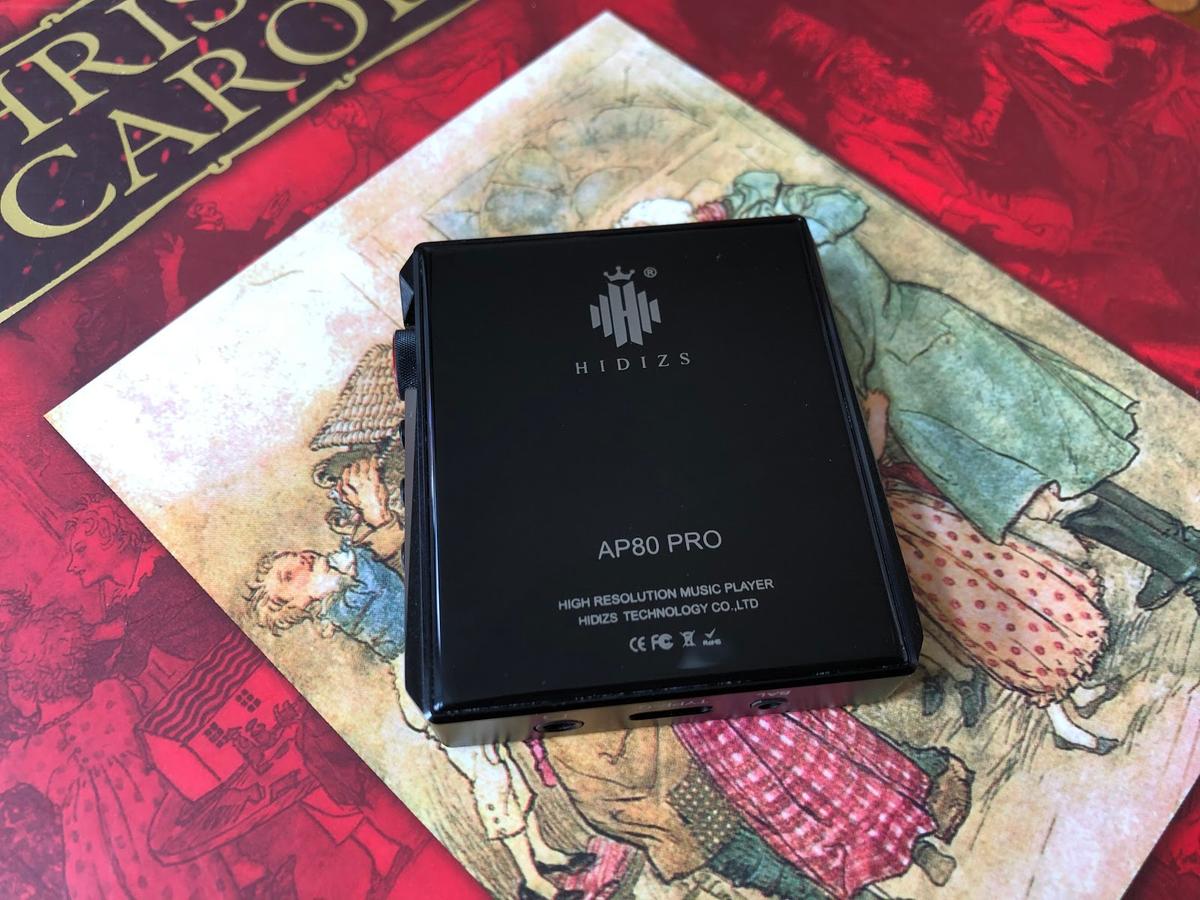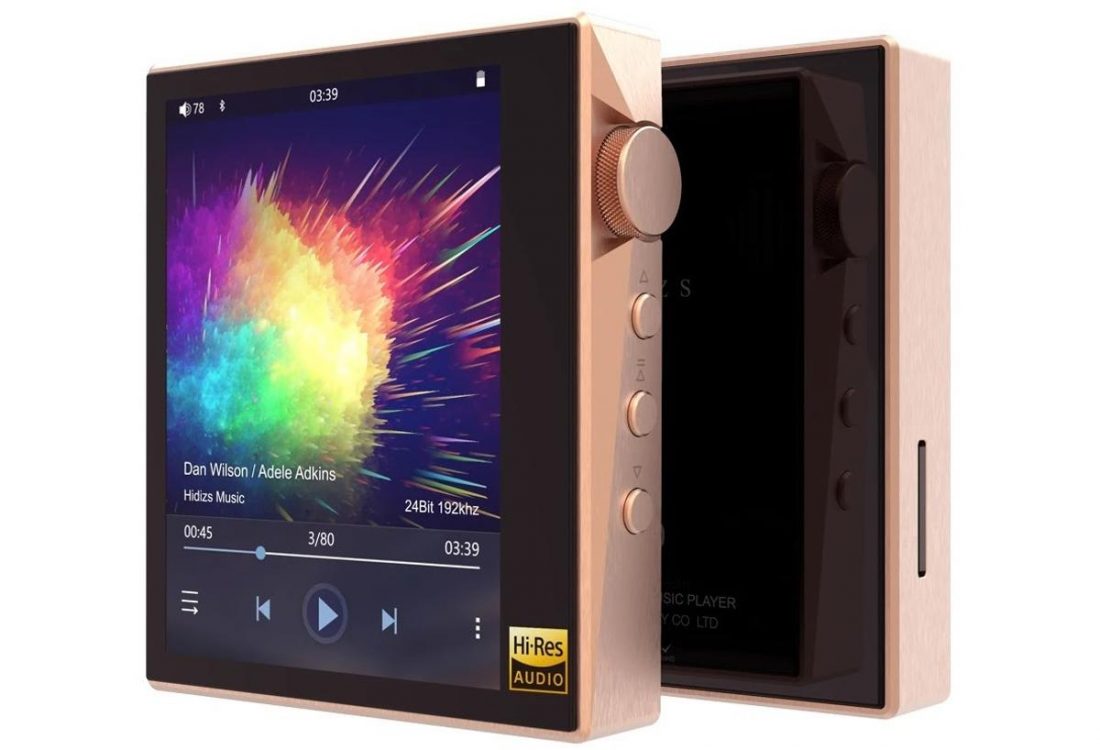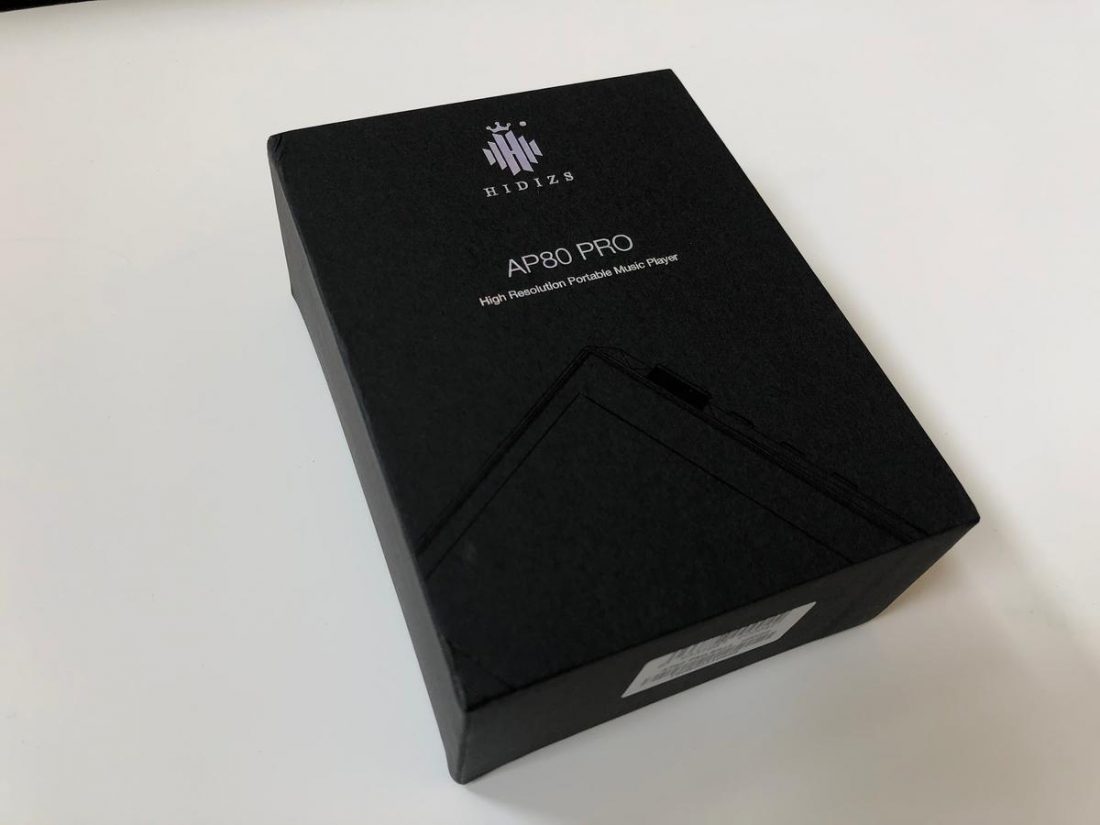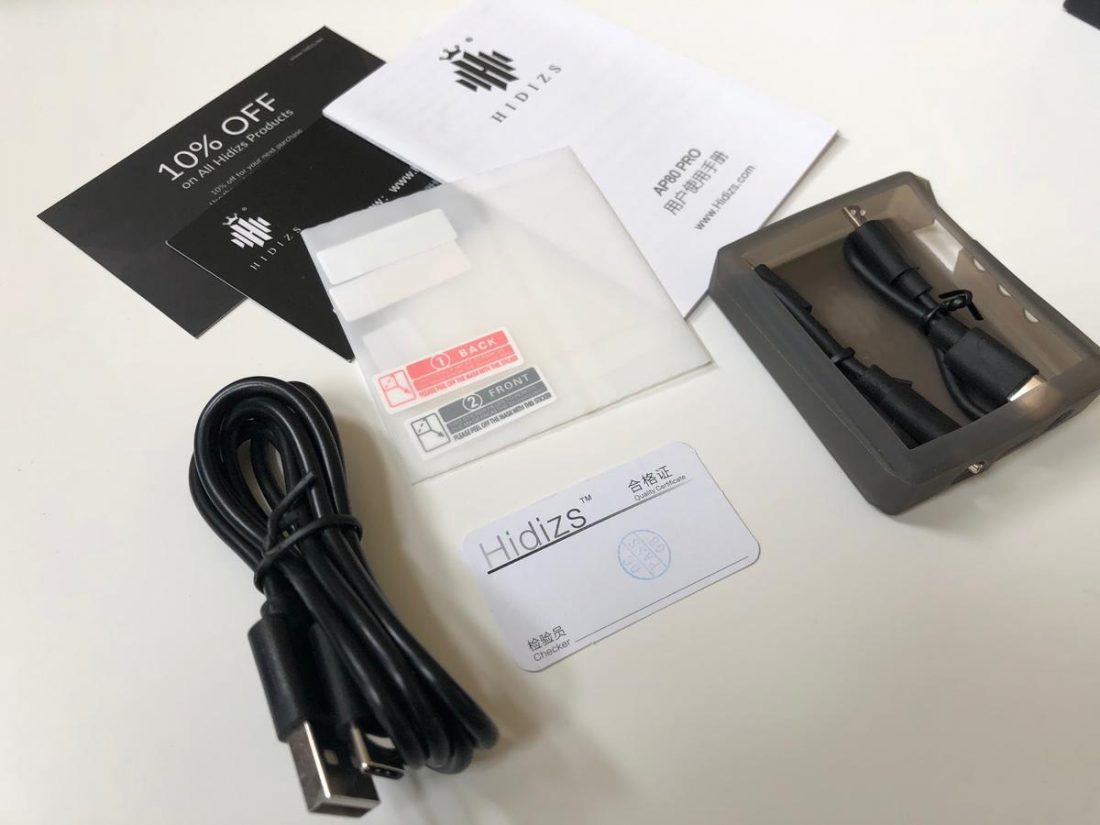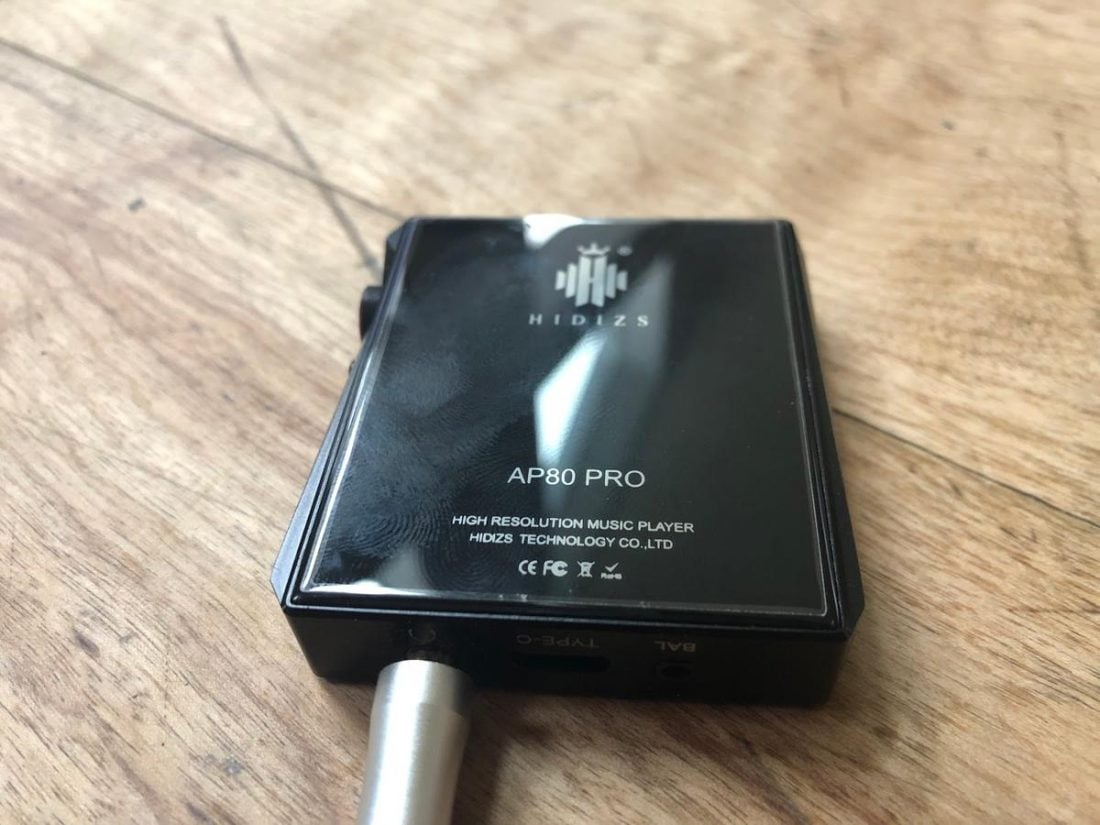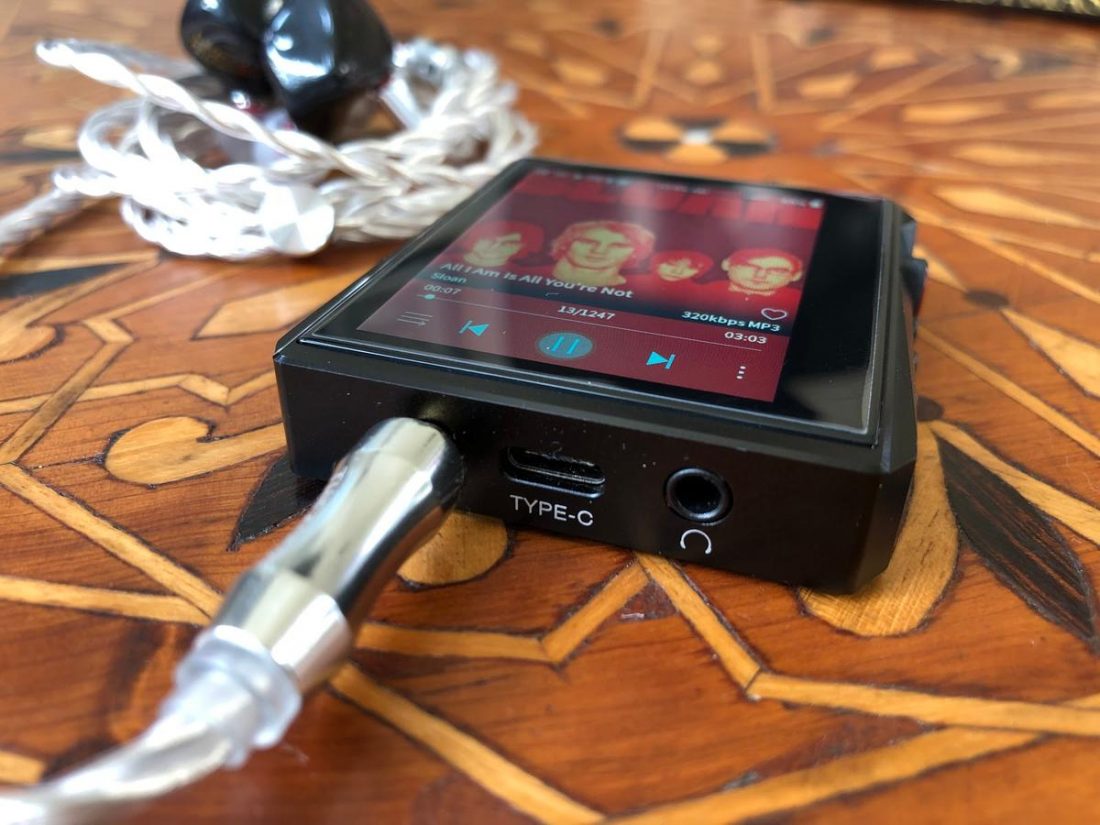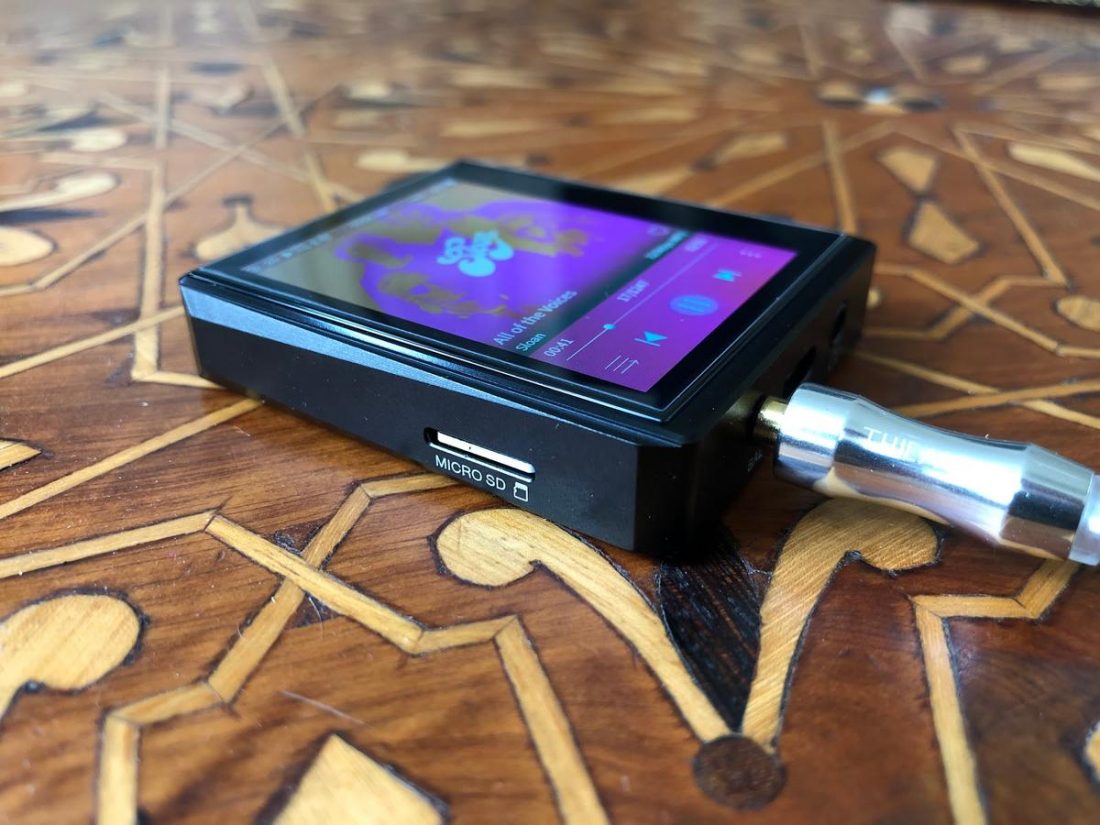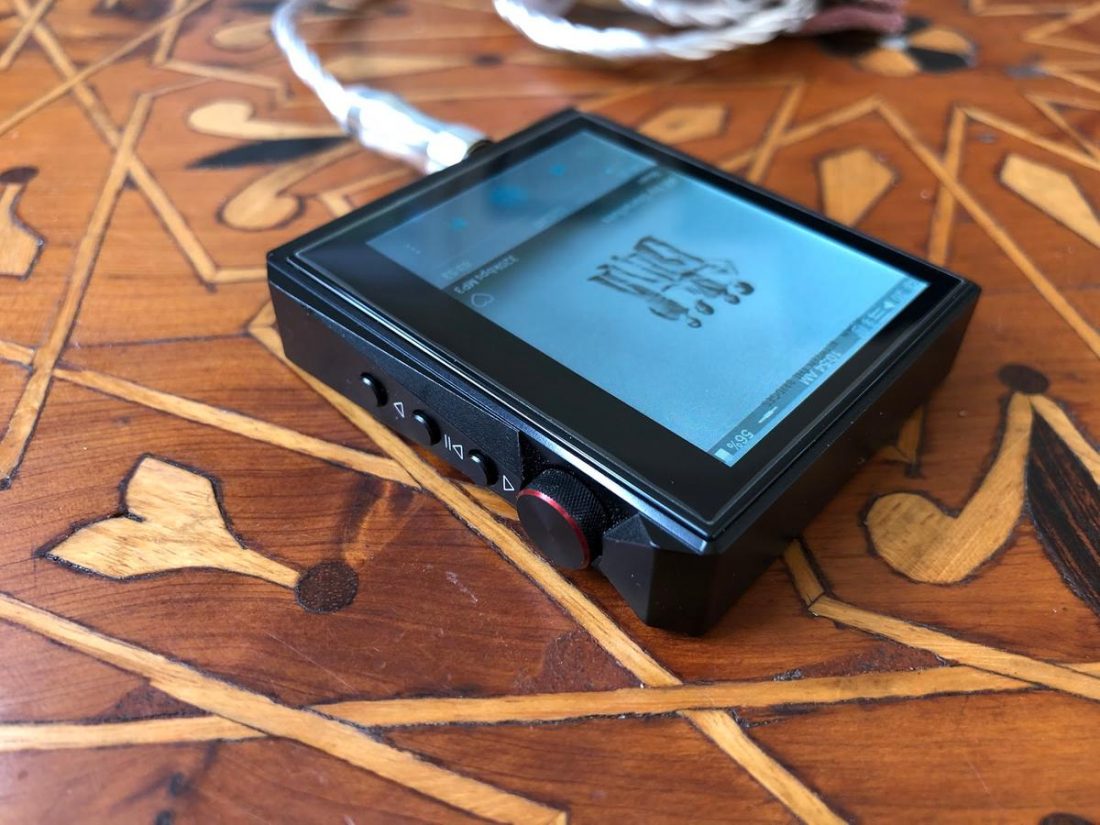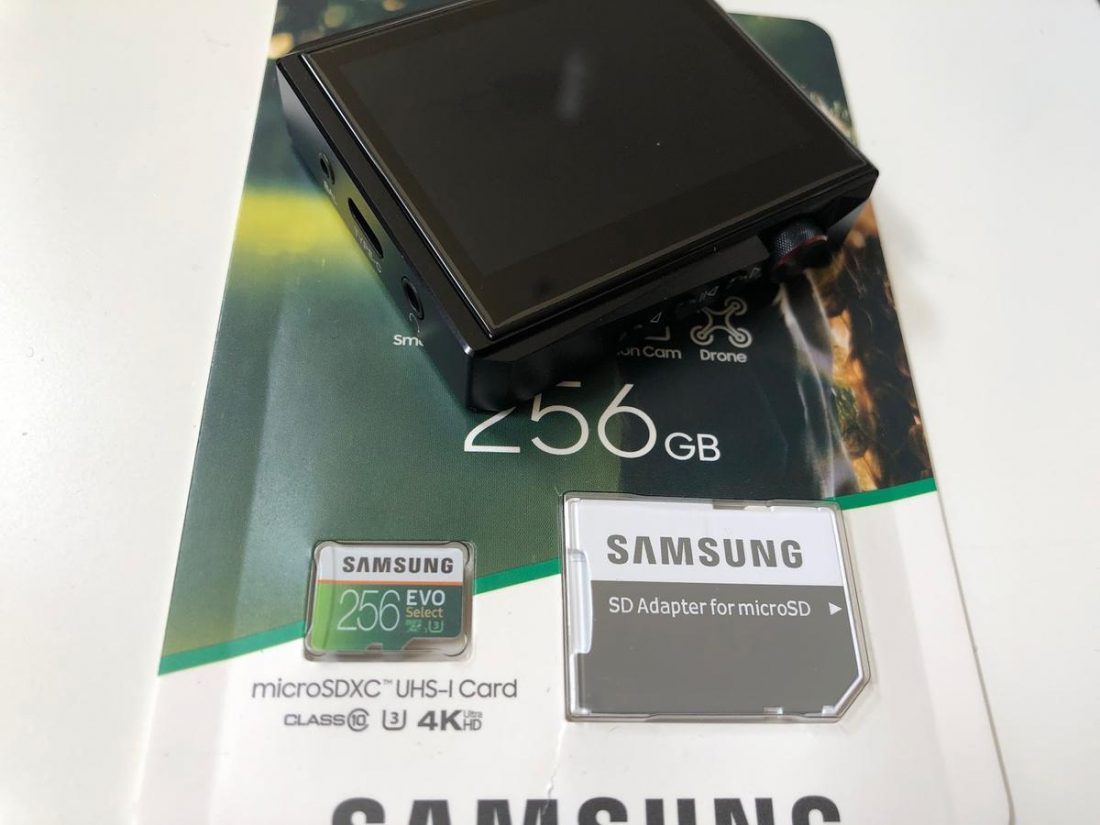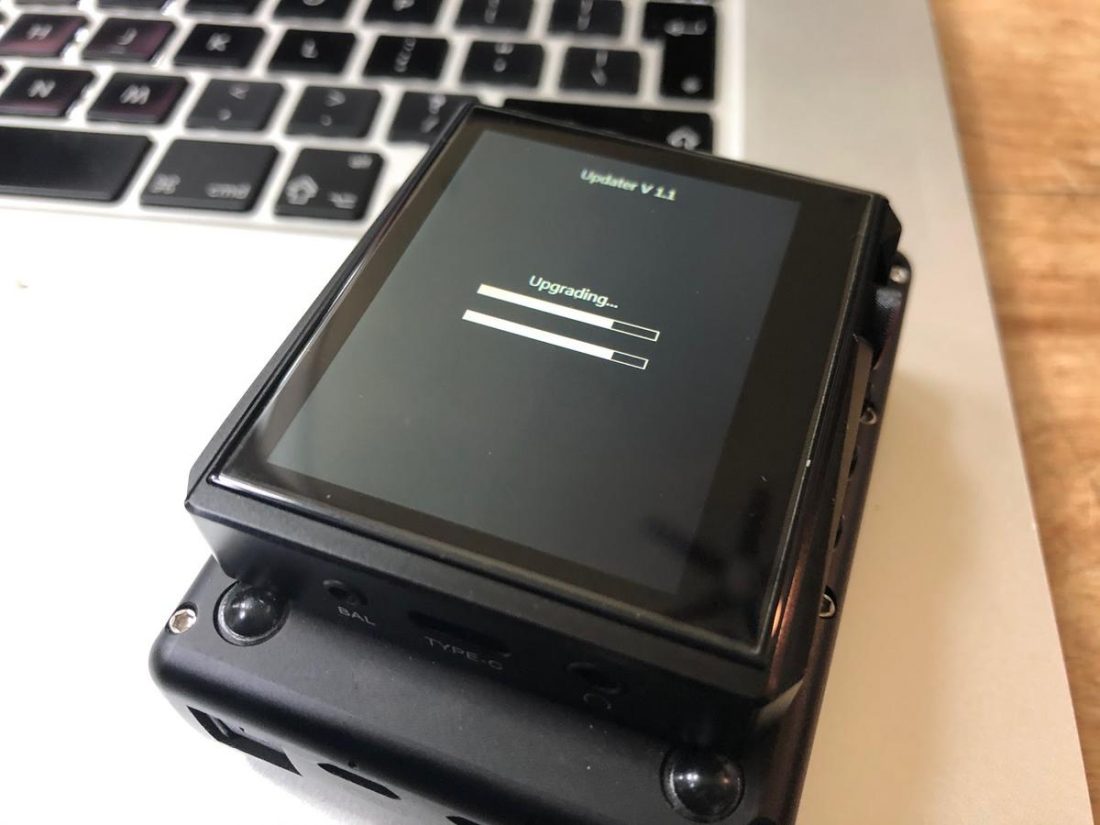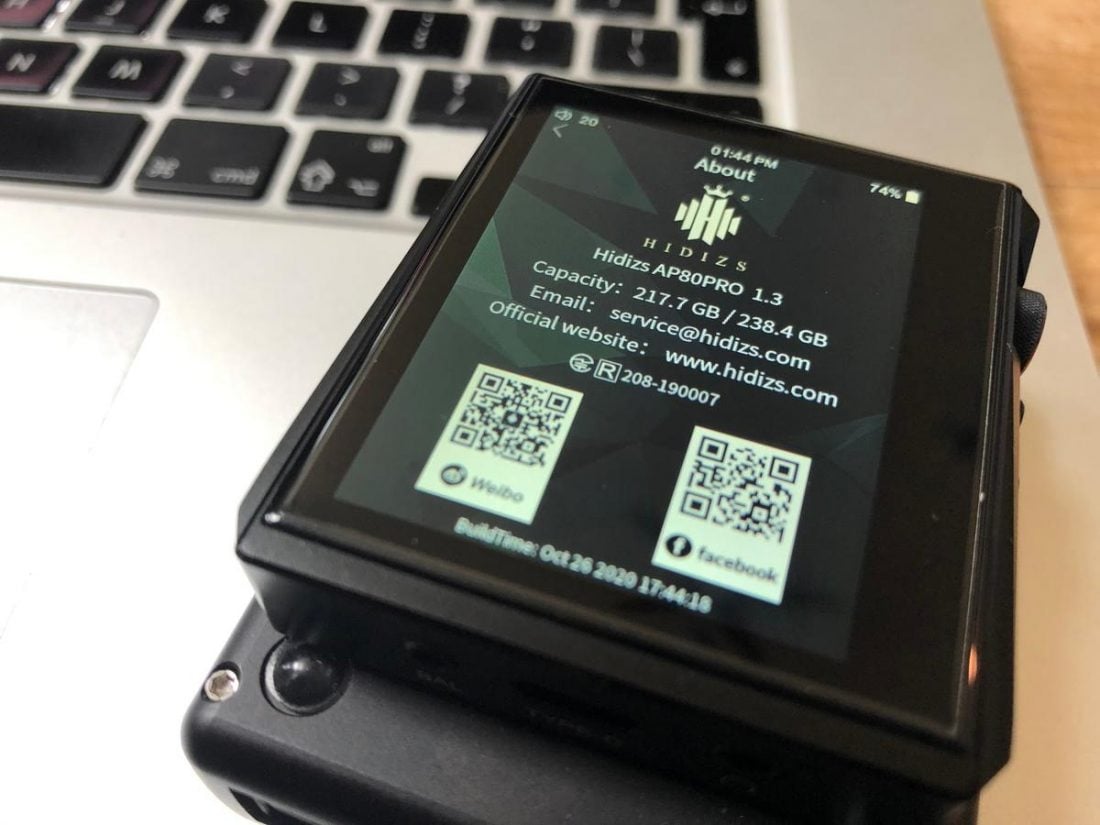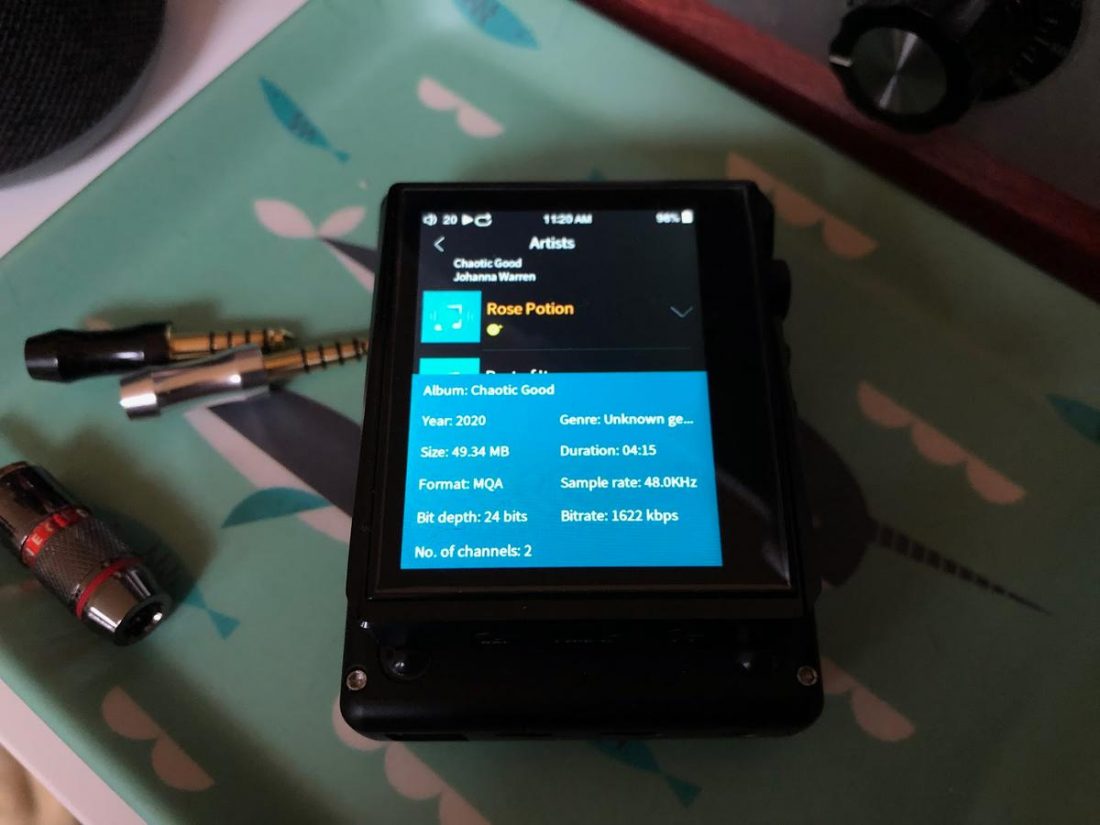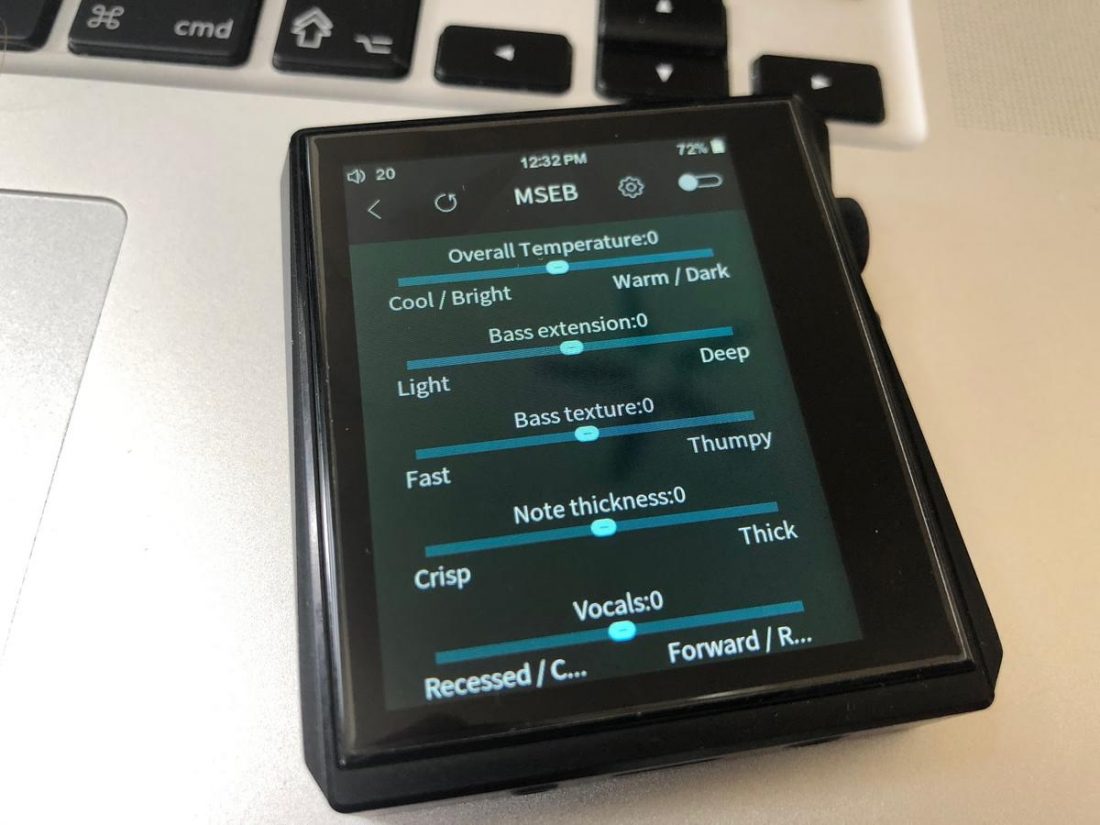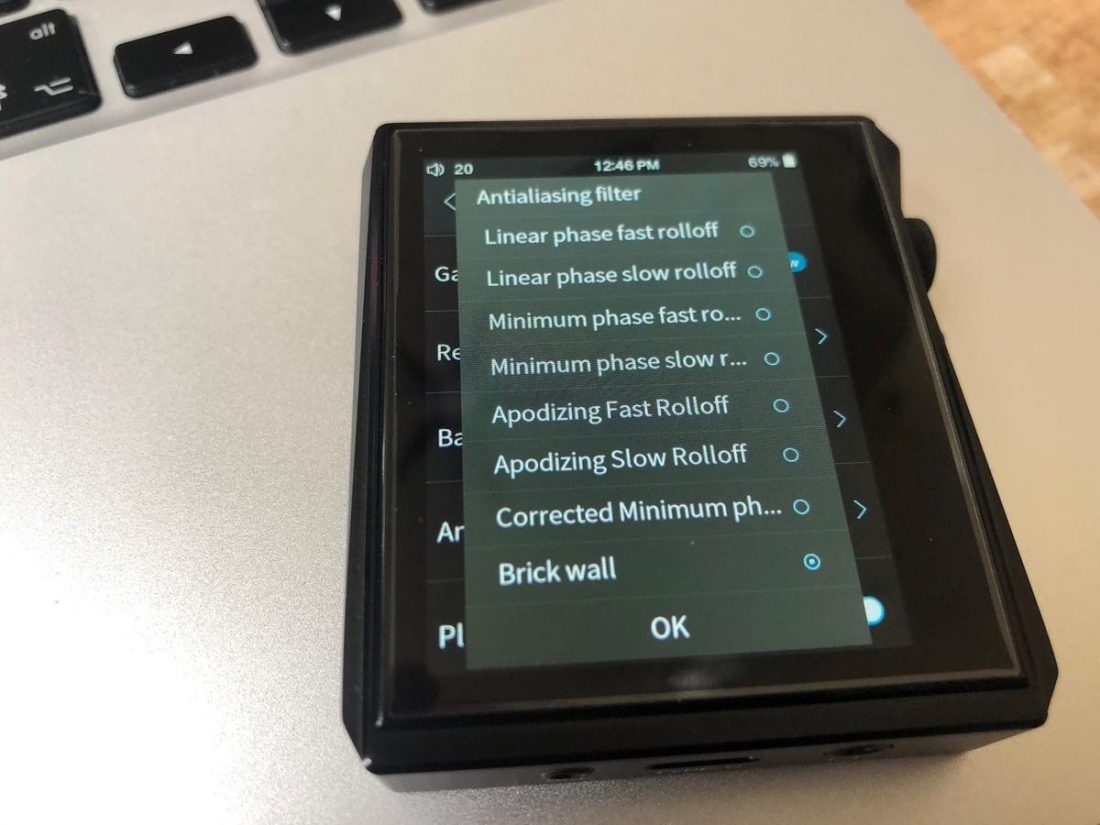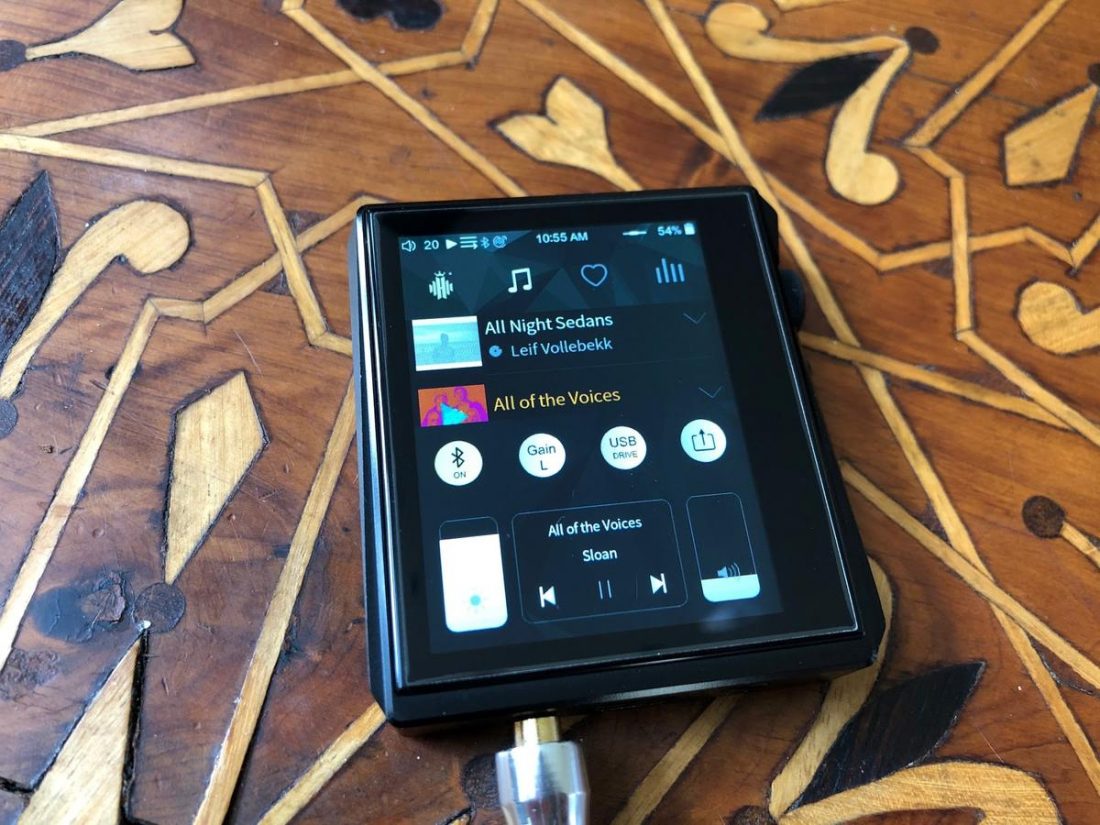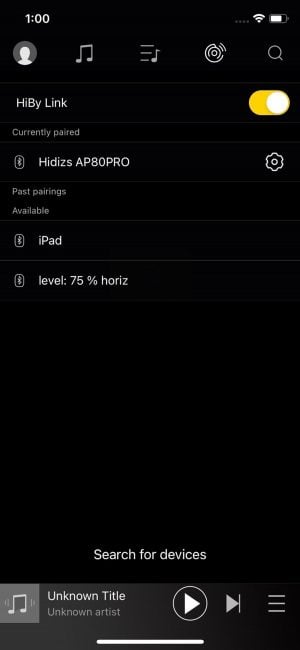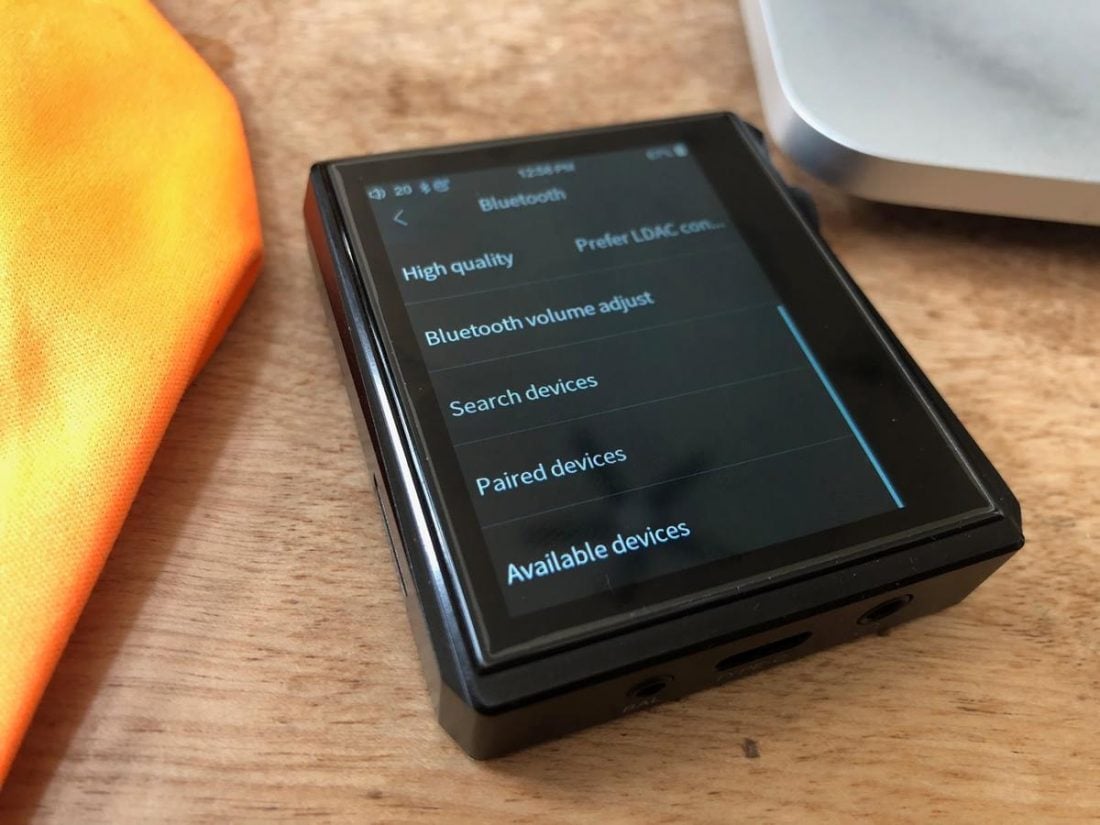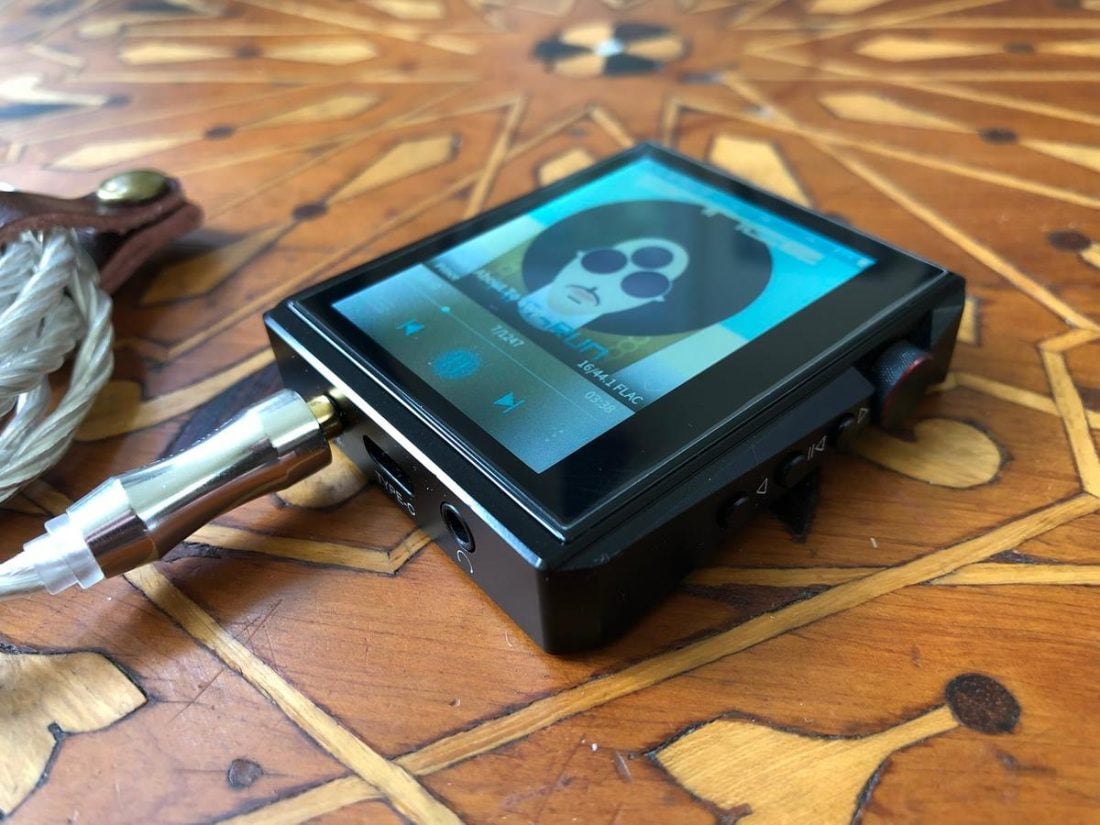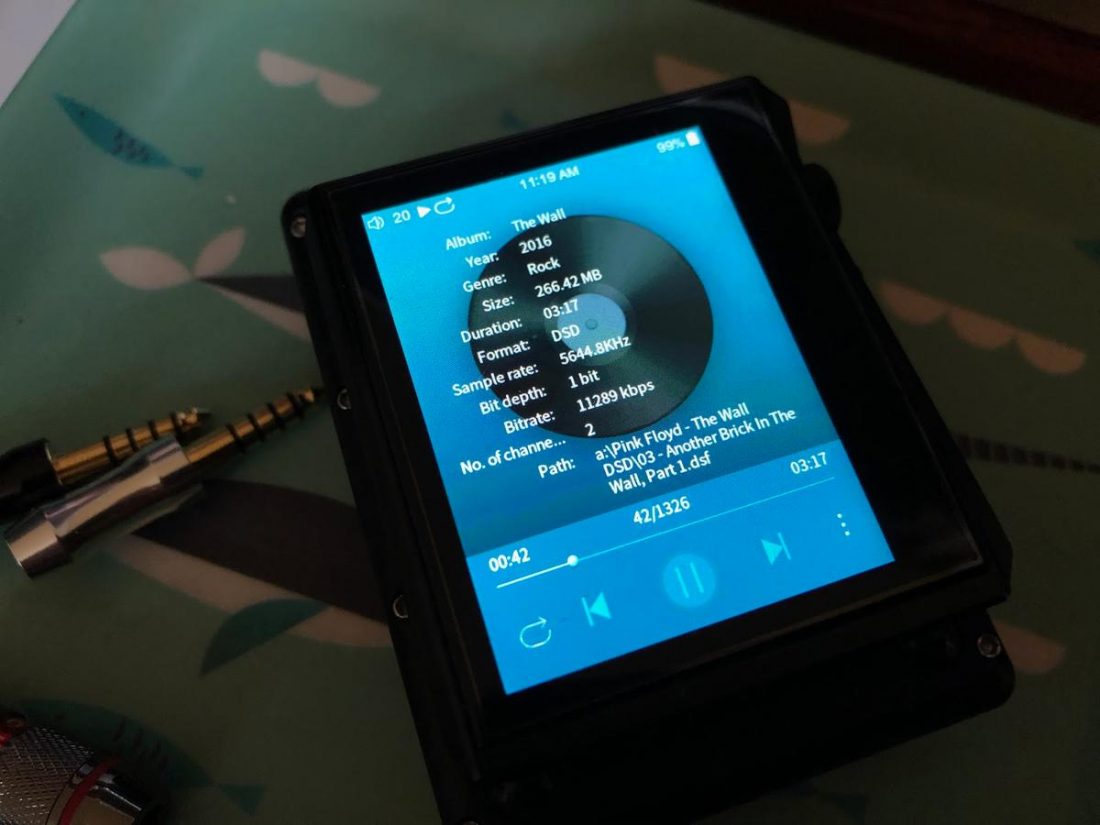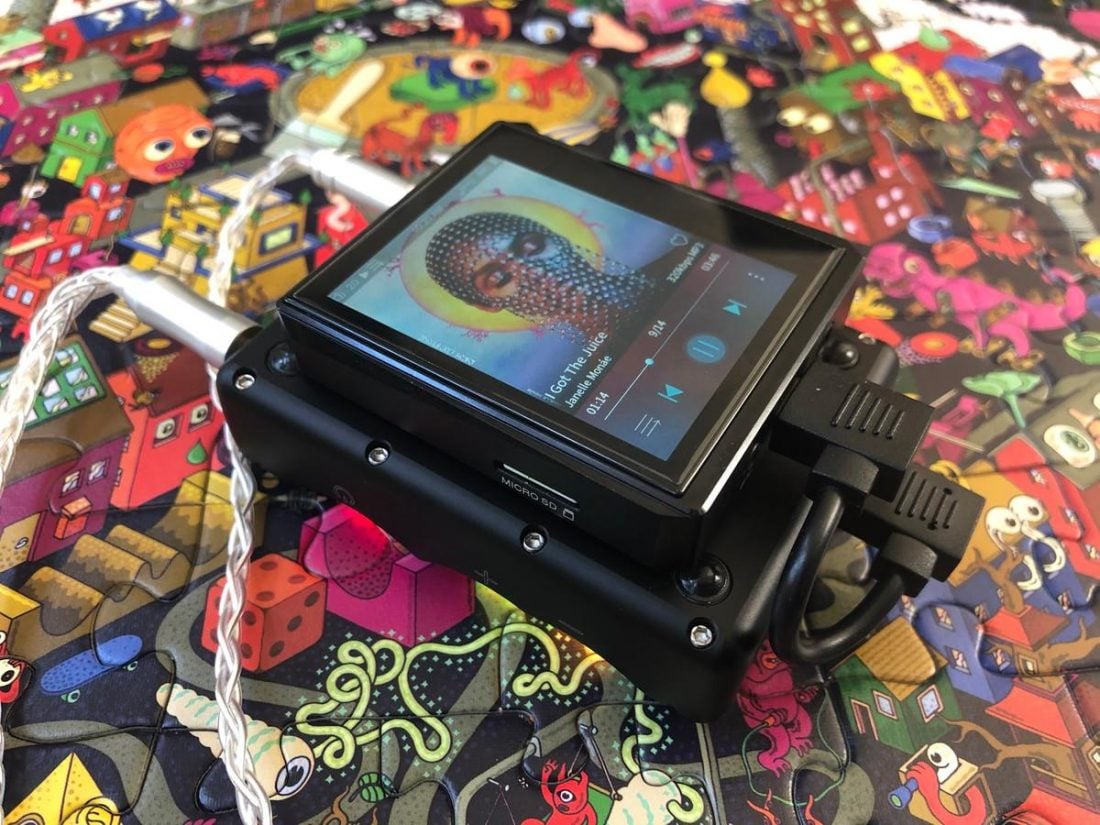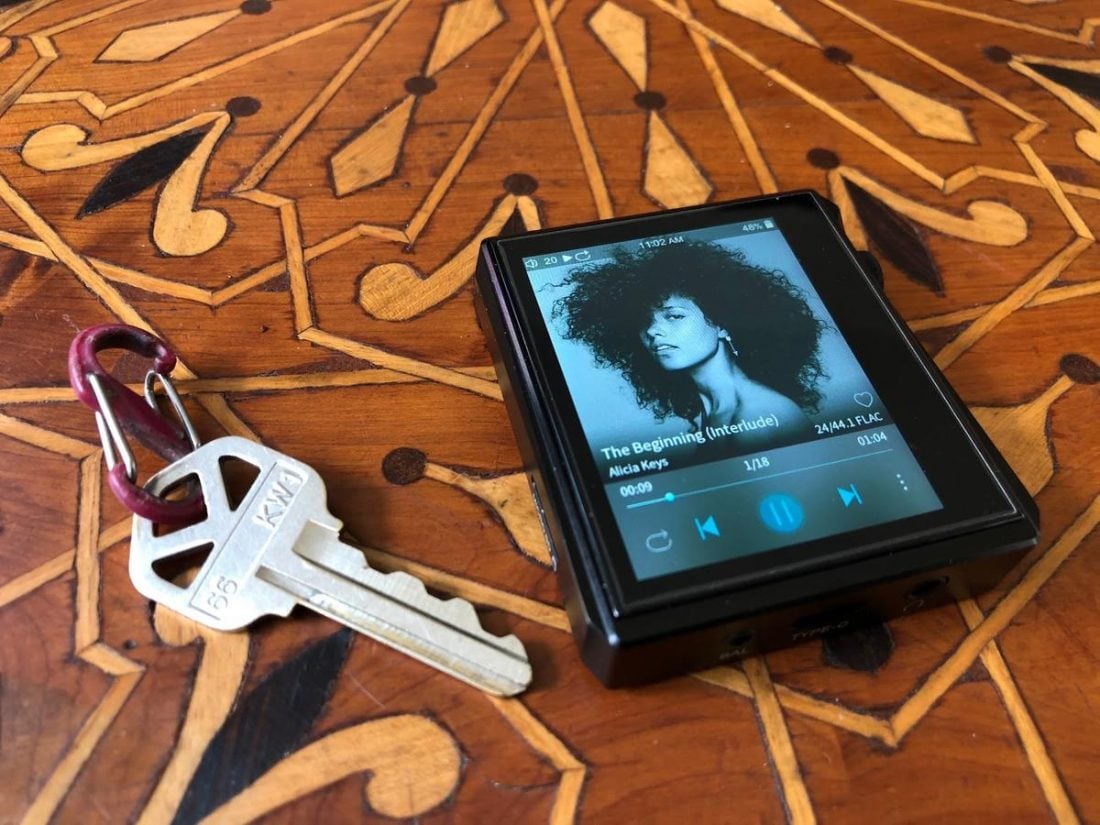In May 2018, Hidizs started crowd-sourced funding for the AP80 DAP, which (at the time) they described as the “Next Generation Ultraportable Hifi Music Player”. 1,795 backers supported it, and they raised more than $240,000 in funding. The AP80 is a tiny yet feature-rich digital audio player that retails for a mere $120 USD. After a few aesthetic upgrades, including making the AP80 available in a stainless steel or copper body (rather than the standard aluminum housing), Hidizs has more recently released the AP80 Pro. Since the Pro model keeps appearing on ‘best-of’ lists of budget DAPs, I wanted to try it myself. The AP80 Pro is a real upgrade over the original model, including a move to a dual-DAC ES9218 chipset, support for balanced headphone connections, and a dedicated HBC3000 FPGA (Field Programmable Gate Array) chipset to support higher-rate DSD decoding. Somehow, Hidizs did this while retaining the first design’s diminutive shape and size (the Pro is just a mere millimeter or two larger). These upgrades certainly seem like they deserve the ‘pro’ moniker. Dual DAC, DSD, and balanced output in a device not much larger than a box of matches? Not to mention, it includes a full-color OLED touchscreen. It is just a toy, or can the AP80 Pro deliver for audiophiles on a budget?
Hidizs Overview
Hidizs (pronounced ‘hid-is’) was founded in 2009 by a group of technicians with HiFi audio research and development experience. Their goal was “to produce a superior and affordable pocket HiFi audio device.” In 2010 they started researching the global HiFi audio market, and they officially finalized their team in 2012. The AP100, launched in 2014, was the first music player created by Hidizs. In 2017, they funded the AP200 DAP through Kickstarter. 2018 saw the release of the AP80 DAP, and in 2019 the Hidizs team branched out and produced the Mermaid MS4 IEMs. Now the Hidizs company offers several different DAPs, IEMs, Bluetooth modules, amplifiers, and accessories.
Technical Specifications
Name: Hidizs Brand: AP80 Pro Price: $160 Form: Digital Audio Player (DAP) DAC: Saber ESS9218P x2 Master Chip: Ingenic X1000 FM Radio: 4705 Pedometer Sensor: KX126 Operating System: HiBy Music HiBy OS 3.0 Screen: Samsung 2.45″ (480×360) IPS HD Touchscreen External Micro SDHC Memory Card Support: 512 GB (FAT32) supports firmware upgrade Support for FLAC, APE, WMA, WAV, ALAC, AAC, OGG, MP3, AIFF, DSF, DIFF, DSD 64/128/256 audio formats PCM Support: 384kHz/32Bit Gain Settings: High/Low Digital Filters: 8 Bluetooth Version: 4.2 Bluetooth Audio Codec: Apt-X, LDAC, and HiBy Link Outputs: 3.5mm stereo, 2.5mm balance, USB-C Frequency Response: 20Hz-90kHz Total Harmonic Distortion+Noise: 0.0015% (1kHz) Recommended Headphone Impedance Range: 8-200Ω
Single-Ended Output
Output Power (per channel): 70mW @32ohm Dynamic Range: 115dB Signal-to-Noise Ratio: 119dB Channel Separation: 70dB (1kHz, A-weight, Rated Output)
Balanced Output
Output Power Balanced (per channel): 190mW @32ohms Total Harmonic Distortion + Noise: 0.0015% (1kHz) Dynamic Range: 116dB Signal-to-Noise Ratio: 120dB Channel Separation: 98dB (1kHz, A-weight, Rated Output) Controls: Japanese ALPS Volume/Power Knob, three physical buttons: play/pause, previous track, next track Battery: 800mAh 3.7V Li-Polymer Battery Battery (hours): 6-8 (balanced), 8-11 (single-ended) Deep Standby Time: 50 days (depends on actual usage) Body material: aluminum, Rear: stereoscopic glass Colors: red, blue, black, grey Dimensions: 61x56x13.8mm Weight: 68g IPX: N
Packaging
The AP80 Pro comes in a logoed black box. The packaging is all clean, professional and suitable for the product. It’s a simple black cardboard box with a few accessories inside and is absolutely sufficient for this budget device.
In the box
AP80 Pro DAP (front and rear screen protectors are pre-applied) 2 Screen Protectors USB C – USB A cable USB C – Micro USB cable x2 (±19cm) Silicone Case Quality Certificate Serial Number Card 10% off e-Coupon User Manual
Design
The AP80 Pro is a surprisingly well-manufactured device. It feels like a small, high-end smartphone, with a chamfered aluminum shell and glass on either side. The AP80 Pro is a bit thicker, but overall it’s only about 1/3 the size of my iPhone X. The AP80 Pro is beautiful and very reminiscent of high-end FiiO or Astell&Kern DAPs. The AP80 Pro is approximately square in shape, with the 2.45” Samsung IPS screen slightly offset to the left on the front. The left side has a micro SD slot (there is no internal memory, but it supports up to 512Gb cards). The bottom has a 2.5mm TRRS balanced headphone jack, USB-C port, and 3.5mm TRS headphone jack. The right side has a small round aluminum volume/power knob and three aluminum buttons for forward, back, and play/pause. The aluminum case flares slightly on this side to protect the knob from accidental activation. Ergonomics are excellent. The AP80 Pro is pleasantly weighted and gives the impression of intrinsic worth. It fits nicely in hand, the touch screen is responsive, and the buttons and knobs are intelligently located and work as they should.
Screen
The Samsung 2.45” IPS touchscreen is clear and easy to read, even in bright conditions outside. Colors are great, and cover art pops. It features a resolution of 480×360, and icons are easily discernible.
Software and Features
The AP80 Pro does not use Android as its OS; instead, it is based on the HiBy Music Player. While this means there is no support for Android APK loading or customization, HiBy OS 3.0 is undeniably feature-rich and impressive. Seriously, the AP80 Pro’s list of supported formats and software features is pretty overwhelming. Just check out the Specifications section above! Digital filters, EQ, and sound shaping settings abound. It’s easier to point out that there is no app support for streaming services (such as Tidal, Spotify, etc.), and MQA decoding isn’t on the list. Beyond that, there isn’t much that this micro-marvel can’t do.
Sound Settings
The menu structure is incredibly detailed and would take far too long to list everything. Instead, I will list some of the fascinating audio adjustment features found in the MSEB (digital signal processing) and Play settings in the Player app. If you like to tweak audio settings to fit your personal preferences, you will find the HiBy OS 3.0 much to your liking.
MSEB (Mage Sound 8-ball Tuning) Settings (Player)
Overall Temperature: Cool/Bright – Warm/Dark Bass Extension: Light – Deep Bass Texture: Fast – Thumpy Note Thickness: Crisp – Thick Vocals: Recessed – Forward Female Overtones: Detox – Vivid Sibilance LF: Soft – Crisp Sibilance HF: Soft – Crisp Impulse Response: Slow/Musical – Fast/Hard Air: Soft – Crisp
Play settings
Play mode DSD Output mode: PCM, DOP, Native DSD gain compensation Resume Gapless playback Soundfield Max volume Fixed power-on volume Crossfade Gain: Low/High Replaygain Balance Antialiasing Filter: Linear Phase fast roll-off, slow, Minimum phase fast, slow, Apodizing fast, slow, Corrected Minimum, Brick Wall. Play through
Connection Options and Modes
In addition to an all-in-one digital audio player (DAP), the AP80 Pro can function as a USB DAC or transport (source for another DAC), connected via cables or a variety of Bluetooth codecs. It performs flawlessly for me regardless of how I connect it. Cooked into all these features is another cool innovation entitled HiBy Link. Simply download the HiByMusic player app on your smartphone, pair it with your AP80 Pro, and you can control the AP80 Pro’s music playback from your phone without ever taking it out of your pocket. Wow.
Internals
There is an incredible amount of technology under the AP80 Pro’s hood. It features dual ES9218 SABRE DAC chips, an Ingenic X1000 processor (also used by FiiO and HiBy), and a custom HBC3000 FPGA chip (for noise and jitter correction). All this means the AP80 Pro can support FLAC, APE, WMA, WAV, ALAC, AAC, OGG, MP3, AIFF, DSF, DIFF, and DSD 64/128/256 audio formats. PCM support is 384kHz/32Bit. Adding the second ES9218 DAC chip allows for proper balanced-output playback, with the inherent output power increase. In this case, the AP80 Pro yields up to 190mW @32Ohms from the 2.5mm balanced jack, vs. 70mW from the 3.5mm jack. Processing power is absolutely sufficient for this device. DSD support and navigation is reasonably quick, albeit slightly slower than FLAC. Somehow the AP80 Pro does all this without getting too warm. Music database updates and scans take a few minutes to complete but are reasonably snappy even for extensive collections.
Battery
The internal Li-Po battery is rated as 800mAh 3.7V. Usage lifespan is about 12 hours (single-ended) and 8 hours or so for balanced headphone usage. Of course, these values vary significantly depending on the file format, Bluetooth, volume, screen on-time, etc. What is impressive is that a full charge happens in about 1 hour.
Bluetooth
Bluetooth is only 4.2 (rather than the newer version 5); however, it does support high-quality aptX and LDAC codecs, as well as HiBy’s own UAT (Ultra Audio Transmission) codec. Bluetooth is bi-directional. That is, it can serve as a transport (source) for Bluetooth headphones or a receiver, or the AP80 Pro can receive a Bluetooth connection and play files from a different device.
AP80 Pro Sound Quality
Overall, AP80 Pro’s sound signature is characterized as being reasonably neutral and natural. It leans towards clarity and brightness, and this produces a good impression of transparency. These impressions are essentially an aggregate average, and I compiled them using a variety of headphones, including the Meze 99 Classics, HarmonicDyne Zeus, Thieaudio Legacy 5 IEMs, and Mangird Tea IEMs. The sound is noticeably improved using the balanced output for any headphones or IEMs that benefit from additional amplification. Channel separation, clarity, and dynamics are increased, making the listening experience more visceral and engaging. The single-ended output feels somewhat flat in direct comparison. There was no noticeable hiss using highly-efficient IEMs, and the background remained silent. Full disclosure, I have found the perfect pairing for the AP80 Pro, and I have adhered it to the bottom of my Chord Mojo, connected via a short, right-angle, USB C – Micro cable. This combo marries all the features of the OS with the Mojo’s outstanding sound quality. They fit surprisingly well together. By adding some rubber feet to the top of the Mojo, they can sit comfortably with the AP80 Pro on top. It makes for an impressively solid lump of aluminum audio excellence.
AP80 vs. AP80 Pro Comparison
Where to Buy
Conclusion
Thank you to Headphonesty for purchasing the Hidizs AP80 Pro at my request. I had done my homework, and this model kept popping up at the top of the bargain DAP list. I just had to know how it performed for myself! The Hidizs AP80 Pro was purchased from Linsoul. The iPod is long gone, and Apple firmly believes that the modern iPhone is a suitable replacement. Indeed, current smartphones offer a wide variety of applications. They can yield excellent sound quality and output power when paired with an external portable DAC/Amp.
Benefits of the AP80 Pro over a smartphone
Dedicated design for headphone listening, including balanced output and physical buttons. Removable high-capacity micro SD card support. HiBy OS is staggeringly feature-rich with DSP and EQ options. Integration for remote smartphone control via HiBy Link. Tiny size for ultimate pocketable portability. Frees up the smartphone for other uses. Less expensive than a smartphone plus a portable DAC/amp.
I’m genuinely floored by the amount of customization, features, and options that the AP80 Pro offers. It’s entirely bargain-priced, but virtually no aspect of its build quality or performance would lead you to believe that. However, those who would like to use a DAP for streaming services will have to look elsewhere. The only sonic compromises are of ultimate fidelity and power output, but the step to including a balanced output on the Pro model moves the AP80 line firmly in the right direction. I’ve entirely sidestepped this issue by pairing it semi-permanently with a Chord Mojo. This combination has become my go-to for daily listening and much of the headphone and IEM testing I do for Headphonesty.
